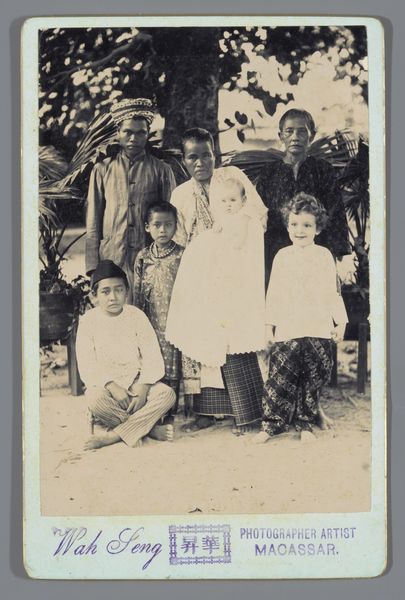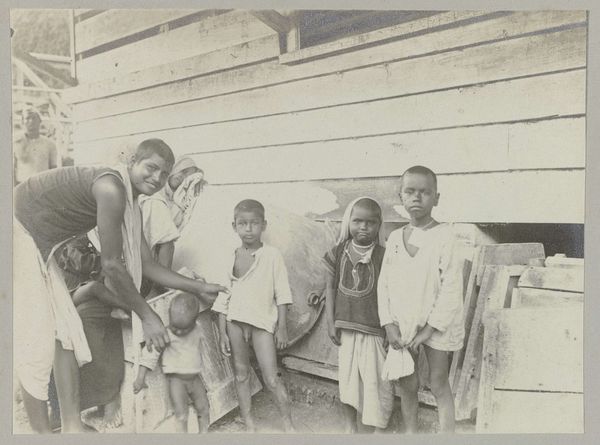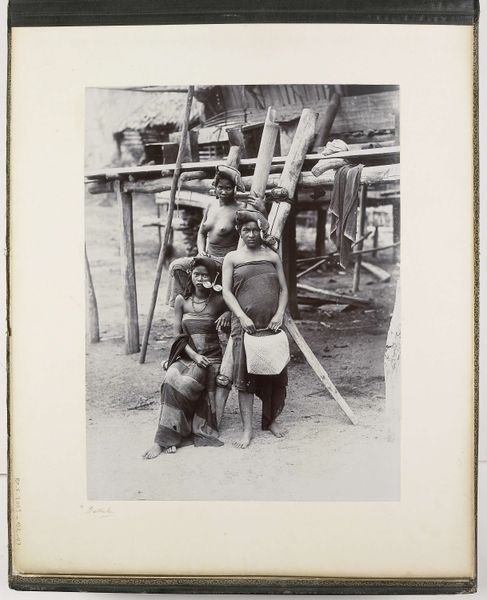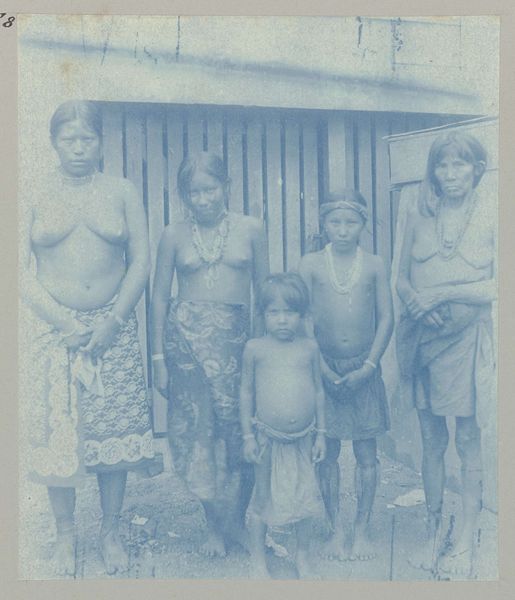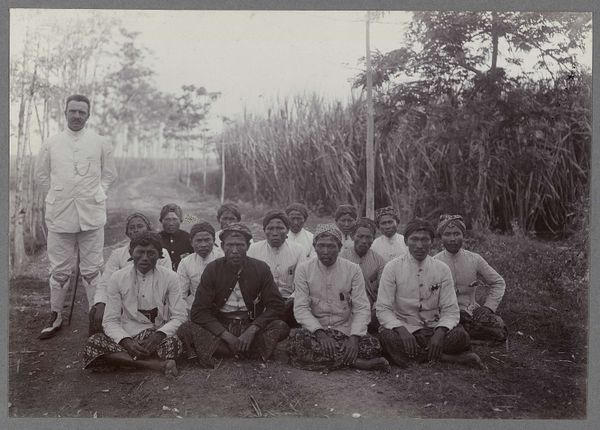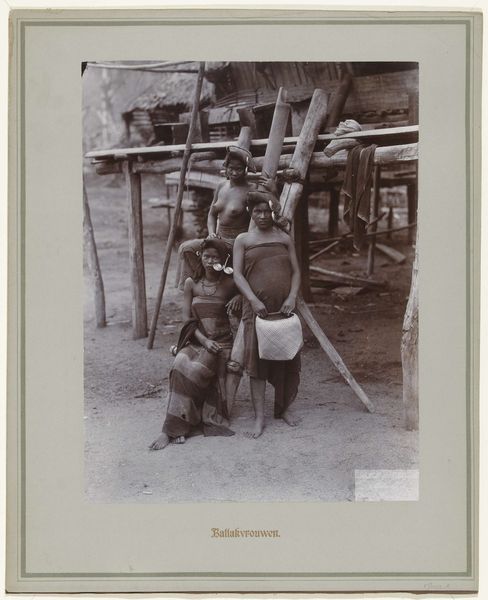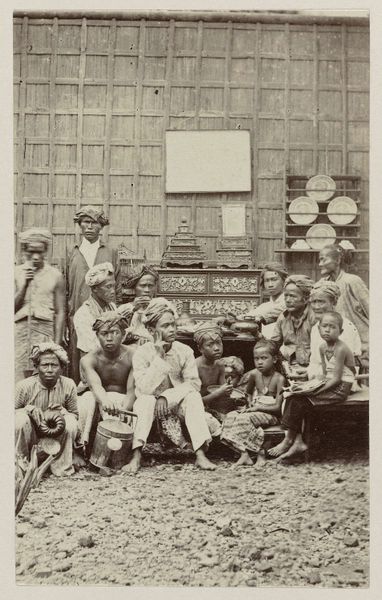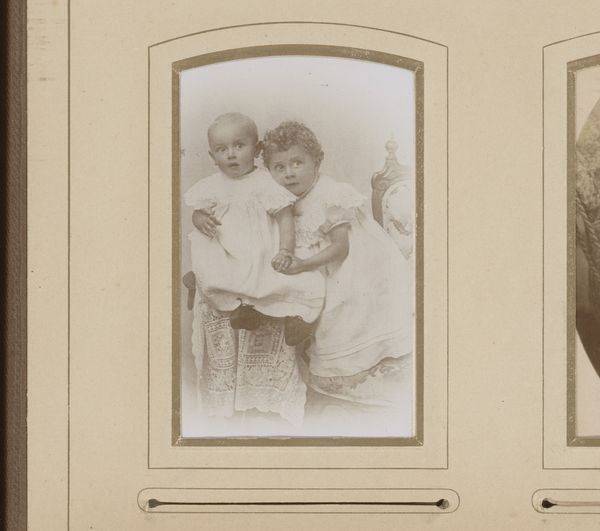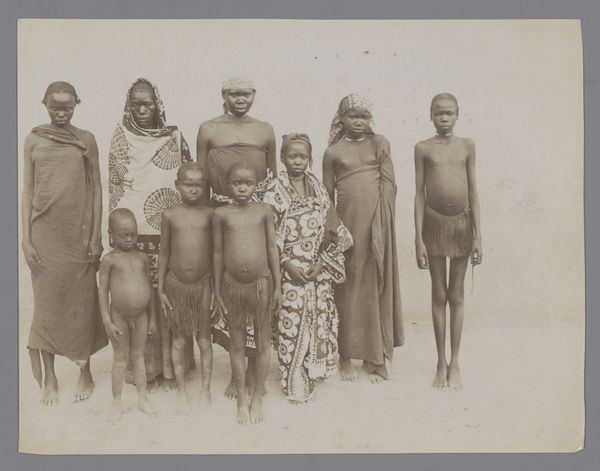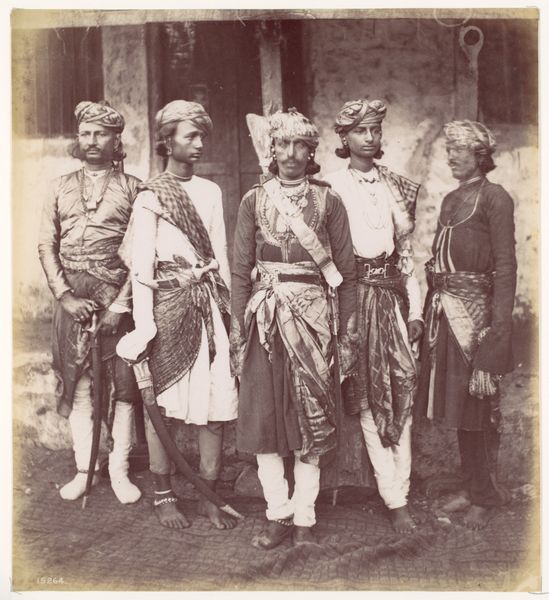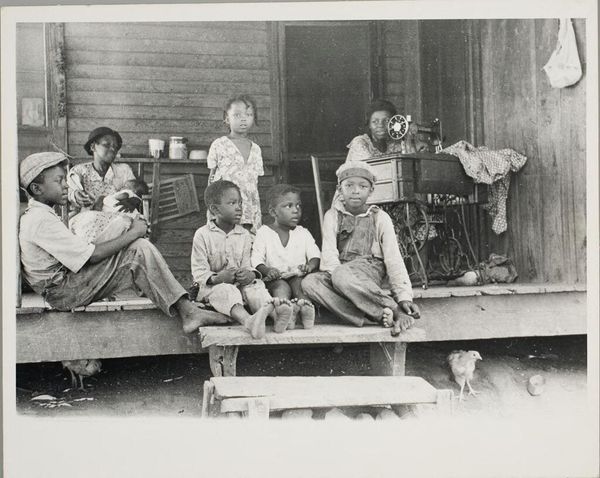
photography, gelatin-silver-print
#
portrait
#
african-art
#
photography
#
child
#
group-portraits
#
orientalism
#
gelatin-silver-print
#
genre-painting
Dimensions: height 85 mm, height 52 mm
Copyright: Rijks Museum: Open Domain
Curator: Let's turn our attention to this albumen silver print, "Portret van zes Indonesische kinderen," attributed to Woodbury & Page and dated sometime between 1857 and 1880. The subjects are presented with a certain directness. Editor: Immediately striking, isn't it? The way the light catches those children's faces gives it a palpable sense of seriousness. It’s simple but commanding. Curator: The composition itself reinforces that. We have six figures arranged laterally, almost uniformly lit. There is a calculated structure at work which directs the eye to their gazes. Editor: And what a sharp contrast between their presence and the backdrop: A rough wooden wall. Makes you consider the colonial gaze inherent in this piece and how these portraits were probably made for Western consumption. Look closely, and you realize this is a photograph documenting labour in photographic workshops as well as the children in front of the camera. Curator: Precisely. The backdrop functions less as contextual information and more as a planar element, pushing the subjects forward in the picture plane. The use of sepia tones unifies the work, further focusing on its formal aspects of light and shadow. Editor: Absolutely, and speaking of form, I see the impact of colonial enterprises reflected through photography. Silver-gelatin printing technology enabled the mass production of these photographs that circulated as ethnographic studies in Europe. We need to ask questions: what kinds of labour relationships did this artistic method make possible? Curator: Indeed. We can see that it is genre painting. The choice of medium enabled that reach, democratizing both image-making and its circulation to wider audiences. This group portrait invites a contemplation about not only those presented before the camera but also its intrinsic aesthetics as objet d’art. Editor: Yes. To contemplate this piece fully, one needs to see beyond what appears to be on its surface. By attending to this image and its materiality, perhaps we can bring an ethics of seeing to the act of witnessing history itself. Curator: A compelling perspective through which to better appreciate this early experiment. Editor: Thank you for directing us through these different dimensions.
Comments
No comments
Be the first to comment and join the conversation on the ultimate creative platform.
